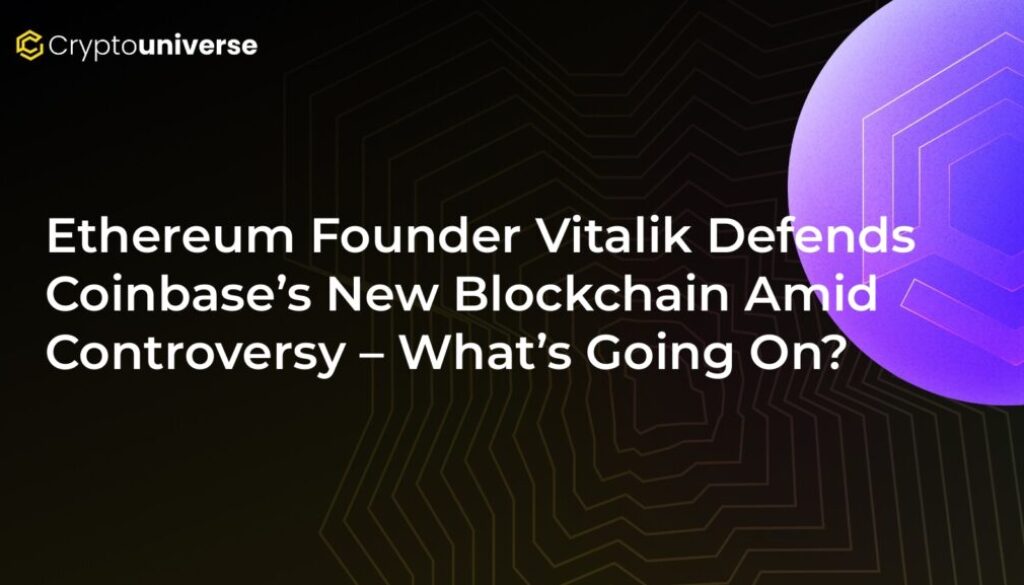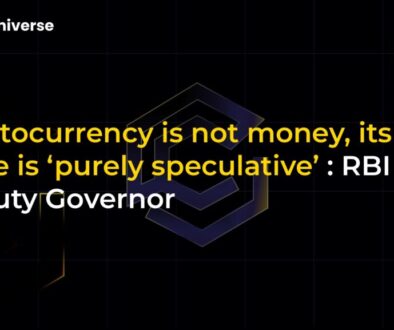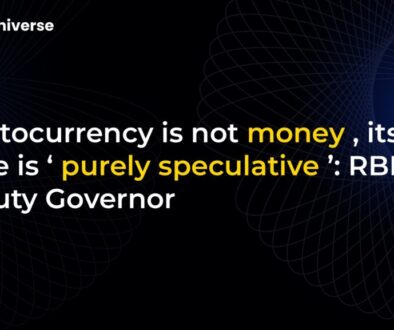Ethereum Founder Vitalik Defends Coinbase’s New Blockchain Amid Controversy – What’s Going On?

The Heart of the Controversy: Are Layer 2s Just “Glorified Servers”?
The crypto world has been buzzing with debate following the launch of Coinbase’s new Layer 2 blockchain, Base. As with many new L2s, critics have raised concerns, questioning their decentralization and security, with some dismissing them as little more than “glorified servers.” However, Ethereum co-founder Vitalik Buterin has stepped into the fray to set the record straight, defending not just Base, but the entire Layer 2 ecosystem.
The core of the issue stems from a misunderstanding of how these scaling solutions work. Buterin clarified that L2s like Base are not independent chains operating in a vacuum. Instead, they are designed to inherit the robust security and non-custodial properties of the Ethereum mainnet. This means that you, the user, always retain ultimate control over your funds through smart contracts on the base layer. This crucial defense comes as the community tries to understand the full story of the
Put to the Test: How L2s Proved Their Mettle in Real-World Crises
Theoretical guarantees are one thing, but the true test of any system is how it performs under stress. Recently, two major incidents provided a live-fire exercise for Layer 2 security mechanisms, and the results strongly support Buterin’s claims.
Case Study 1: The dYdX Shutdown and the $70 Million “Escape Hatch”
When the popular decentralized exchange dYdX announced the shutdown of its v3 platform, built on StarkEx, it created a potential crisis: over $70 million in user funds were on the platform. In a centralized system, this could have spelled disaster.
However, the platform’s built-in “Escape Hatch” mechanism kicked in. This feature, a core part of the L2’s design, allowed users to directly force withdrawals by interacting with the Ethereum mainnet. Here’s what happened:
- Users could bypass dYdX operators entirely to retrieve their assets.
- Over $30 million was successfully withdrawn using an open-source interface provided by the L2 watchdog L2Beat.
- The process, while technically complex, proved that users’ funds were never truly in dYdX’s custody. They were always secured by Ethereum.
Case Study 2: Sony’s Censorship Attempt on Soneium
In another telling incident, Sony’s Soneium network, built on the OP Stack, attempted to censor transactions by blocking “unapproved” tokens at the sequencer level. This is a common fear with L2s that currently use a single, centralized sequencer to order transactions.
But the system’s design prevailed. A clever developer bypassed Sony’s sequencer entirely by submitting their transaction directly to the Layer 1 Ethereum contract. This “forced inclusion” proved that while an L2 operator can delay or ignore transactions, they cannot permanently censor them. The final say always belongs to the decentralized and permissionless Ethereum base layer.
The Roadmap to Decentralization: Vitalik’s Staged Approach to L2 Security
Buterin acknowledges that most L2s are not yet fully decentralized. He has proposed a framework of “stages” to measure their maturity, arguing that a gradual progression is the safest path forward.
- Stage 1 Rollups: These systems still have “training wheels,” such as a security council that can override the system in an emergency. Buterin suggests this is optimal while the underlying cryptographic proofs are still being battle-tested.
- Stage 2 Rollups: This is the endgame—a fully decentralized system with no admin overrides, relying solely on mathematics and code. This stage should only be activated once there is complete confidence in the technology.
This staged approach balances the need for rapid innovation with robust user protection, ensuring that the ecosystem matures without catastrophic failures.
Ethereum’s Economic Paradox: Scaling Success vs. Mainnet Revenue
While L2s are successfully scaling Ethereum by moving activity off the main chain, this has created an economic paradox. As more users transact on L2s, the fee revenue generated on the Ethereum base layer decreases. In August, for instance, Ethereum’s on-chain revenue fell by a staggering 44% to $14.1 million, even as the price of ETH hit new highs.
This raises a critical question: how can Ethereum remain economically sustainable if its own success cannibalizes its revenue? Buterin has proposed a potential answer, suggesting that low-risk DeFi protocols could become Ethereum’s economic anchor. He envisions protocols that offer stable, reliable yields (around 5%) on blue-chip assets, similar to how Google Search funds the rest of Alphabet’s ventures. This would create a sustainable revenue stream without relying on volatile, speculative trading.
What’s Next? The Fusaka Upgrade and the Future of Ethereum
The Ethereum community isn’t just talking; it’s building. The upcoming Fusaka upgrade, scheduled for December 3, is a direct step towards enhancing the L2 ecosystem. By expanding “blob” capacity and implementing PeerDAS, the upgrade will significantly reduce transaction costs for rollups, making them even more efficient and affordable.
Ultimately, the recent controversies and Vitalik Buterin’s defense highlight a pivotal moment for Ethereum. Layer 2 solutions are proving to be genuine, secure extensions of the network, not risky side-systems. While challenges like centralization and economic sustainability remain, they are being actively addressed with a clear, deliberate roadmap. The future is layered, and it’s being built securely on the foundation of Ethereum.


